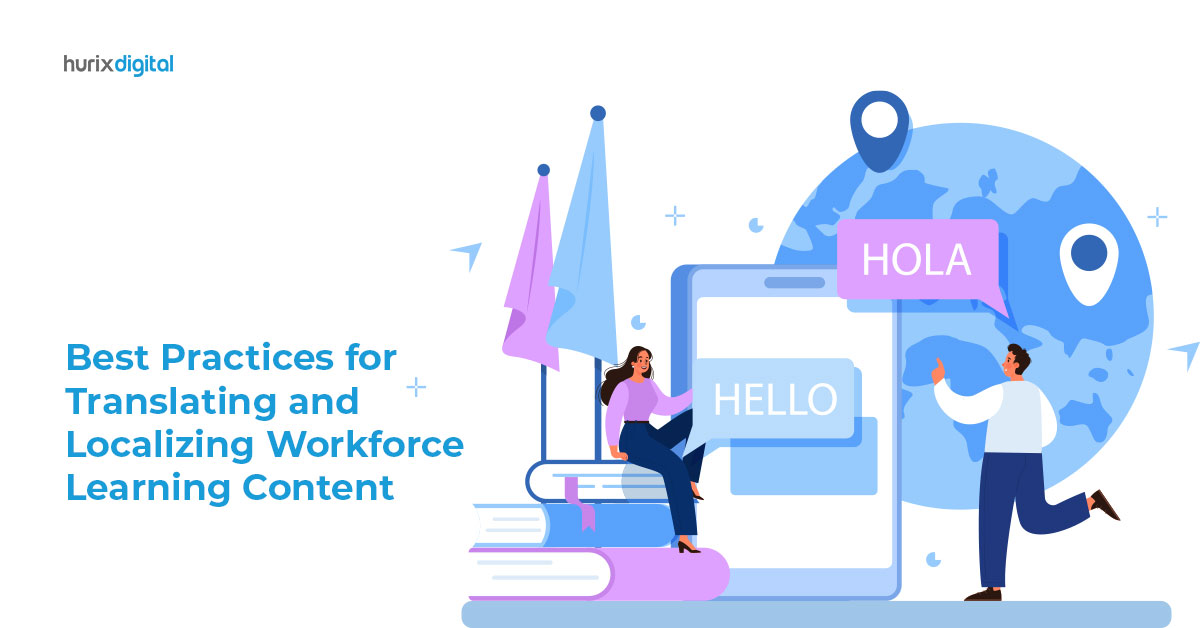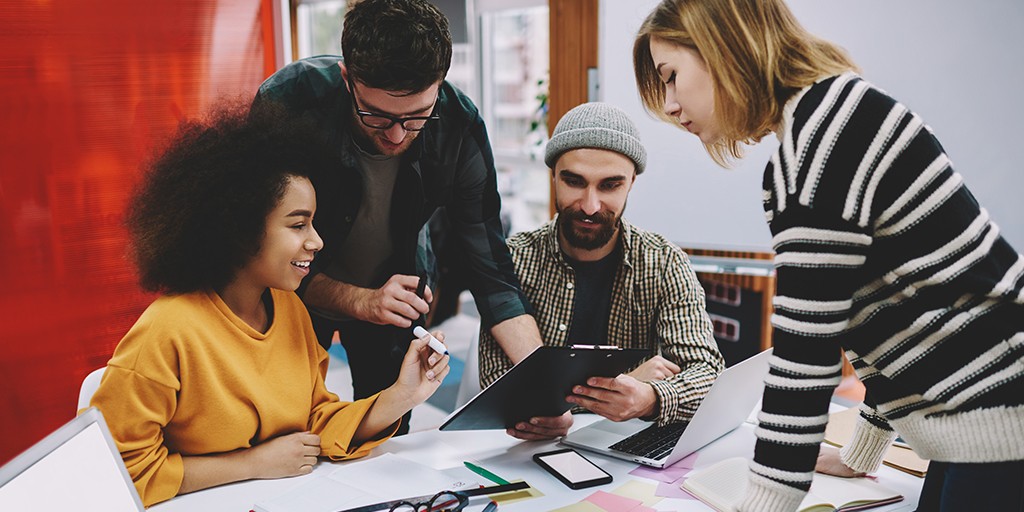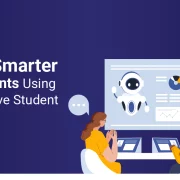
Creating an eLearning Localization Strategy for Global Training? Don’t Miss These Six Tips!
Summary
Explore six essential tips for creating an effective eLearning localization strategy to ensure successful global training and reach diverse audiences.
“The world is your playground,” said Edward Boden.
And that is true for you as an organization. One of the best ways to expand is to take your business to different countries.
But that also means you hire a new workforce, and the need to localize your corporate training modules arises. A one-size-fits-all training approach is outdated, irrelevant, and does not bridge the desired skill gaps.
Many companies have gone global with training. And Netflix is often mentioned for its elearning localization strategy and localization technology for global training. Other big names include AirBnB, Coca-Cola, Johnnie Walker, etc. This article brings the best tips for creating a localization strategy for global workforce development.
Table of Contents:
- What is an eLearning Localization Strategy For Global Training?
- Six Tips to Create a Robust eLearning Localization Strategy For Global Training
1. Start Slow; Build Over Time
2. Think Micro
3. Go for Cultural Exchange Through Mentorship and Forums
4. Bank on Gamification
5. Introduce Storytelling and Scenario-Based Training
6. Let the Experts Take Care of it - The ‘After’ of Creating a Localization Strategy for Global Training
What is an eLearning Localization Strategy for Global Training?
An eLearning localization strategy plans and executes the translation and adaption of eLearning content from one language to another. This is essential as a lot of people prefer learning in their native language.
A study found that only 11.6% of its respondents could speak a second language. There are four main parts to corporate training localization:
- i. The existing training modules are adapted into one or multiple languages. The language is translated, and cultural context is infused (includes things like phrases, examples, colloquial terms, etc.) for multilingual training.
- ii. The content is formatted after the expansion or contraction of the language and the direction in which it is written (LTR or RTL). This is done to ensure ease of use.
- iii. The content is visually adapted through graphics, colors, illustrations, videos, infographics, etc. For example, white, which means purity in one country, might mean death in another.
- iv. The content is tested, improved upon, and updated occasionally to create a glitch-free environment that runs smoothly on native learning management systems too.
An eLearning localization strategy broadly does these four things for an efficient and impactful global training program. But a lot lies in the details.
Also Read: Measuring the Impact of Localization on Corporate Training Effectiveness
Six Tips to Create a Robust eLearning Localization Strategy for Global Training
Before creating a strategy for corporate training localization, collect enough data after researching your employees in the target country.
What are the kind of skill gaps that need to be bridged? What areas of training do you need to focus on? What is common, and what isn’t? Answer those questions.
Then, follow the training localization best practices you discover that most will not tell you about. Let us dive in!
1. Start Slow, Build Over Time
Think of your global training localization strategy as multiple blocks of different colors. Each color represents a country.
Now if you go all-in, you may not be able to incorporate the learnings of one localization project into another. So start with one or a few countries for your global training program and then expand.
2. Think Micro
Turn the eLearning content into bite-sized training modules that improve comprehension.
These micro-learning modules also enhance the accessibility of the training program as it factors in diverse learning preferences for all your employees. They also help in better understanding and easier comprehension, boosting the program’s overall success.
3. Go for Cultural Exchange Through Mentorship and Forums
Introduce people exchanges as part of your eLearning localization strategy for global training. Arrange for mentors from different cultures as a part of cross-cultural communication in training.
You can also open forums for employees to ask their doubts or engage with each other to make your training modules interesting and value-filled. This facilitates a healthy cultural exchange. Paired learning can also add to your strategy.
4. Bank on Gamification
If your organization is based in a company with a culture very different from the country you are looking at next, you might face some resistance. You can navigate this challenge through localized gamification in your training content.
Gamification also leads to a more engaged, passionate, and innovative team. You can use rewards common to the region and introduce cultural context in a fun way to break the ice. This can increase employee retention and foster trust.
5. Introduce Storytelling, Simulations, and Scenario-Based Training
Storytelling, simulations, and scenario-based training are one of the most effective ways to connect with your employees and enhance learning through relatability. A narrative makes the content more dynamic and entertaining too.
You can use folk stories or make the lead characters like the people of the region for which you are employing an eLearning localization strategy. Storytelling, simulations, and scenario-based learning can also make the training module relevant and increase employee engagement.
It is one of the best ways to adapt the content by infusing cultural context.
6. Let the Experts Take Care of it
Experts can be the difference between making or breaking it. eLearning localization strategy specialists like Hurix Digital have years of experience and offer end-to-end solutions to localize your training modules. Armed with a bouquet of software localization services and knowledge, they can streamline your strategy and increase productivity.
Bonus: Integrate your global training modules with the local learning management systems to promote ease of use. Ensure compatibility while migrating data during the localization process, or let an expert test everything for you before the rollout.
Also Read: Exploring the Latest Trends in Localization Technology
The ‘After’ of Creating a Localization Strategy for Global Training
Localization strategies for global training involve constant creation. Once you are done building one, you need to test it, track its performance metrics, and see if it meets your goals.
But even after that, as your global workforce changes, you must keep adding, removing, and modifying your global training content. Plan early, do it at the right time, integrate learner feedback, and hire an expert like Hurix Digital to get flawless results with their localization services.
Hurix Digital has an expert team of linguists, multimedia and instructional designers, and localization engineers with access to artists, proofreaders, and the right personnel you need for a project of such magnitude.
Our eLearning localization services use Robotic Process Automation, provide Quality Assurance Testing and a host of other services to create immersive and relevant training modules that can also have add-on features like gamification or scenario-based learning. Get in touch with us today!

A highly enthusiastic and motivated sales professional with over twenty five years of experience in solution selling of training-related applications and services. Maintains an assertive and dynamic style that generates results. Ability to establish long-term relationships with clients built on trust, quality of service and strategic vision. Specializes in financial services, higher ed, publishing and government in the areas of learning and development.







